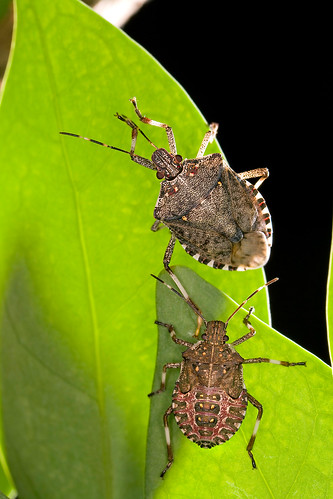
The invasive brown marmorated stink bug causes problems for homeowners and farmers and threatens U.S. specialty crops valued at over $20 billion. Farmers rely on insecticide sprays to reduce crop-damaging stink bugs. Another strategy is using traps with lures to capture this pest.
Finding reliable ways to attract stink bugs is a challenge for researchers. Most insects are attracted to visual and chemical cues that enhance the ability to capture them. According to Agricultural Research Service (ARS) entomologist and research leader Tracy Leskey, brown marmorated stink bugs are attracted to visual cues such as UV black lights and chemical cues such as pheromones. However, black lights also attract numerous non-target insects, making trap capture identification laborious.
Leskey’s recent laboratory trials show that brown marmorated stink bugs are attracted to blue lights—lights that attract fewer non-target insect species. She also tested a combination of visually attractive blue lights with chemically attractive pheromones.
Her studies revealed that in regions like the Mid-Atlantic, which includes large high stink bug populations, pheromone-baited traps performed better than unbaited traps. Timing was important, too. During mid-season, traps containing lights captured more adult stink bugs, while pheromone-baited traps worked better during late season.
In regions like the Pacific Northwest, which includes fewer stink bugs, pheromone-baited traps captured more adult stink bug than unbaited traps. These studies about the effectiveness of both light and pheromone-baited traps will help researchers develop more effective stink bug traps in the future.
